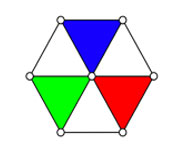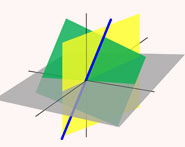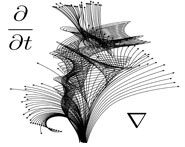


 تاريخ الرياضيات
تاريخ الرياضيات
 الرياضيات في الحضارات المختلفة
الرياضيات في الحضارات المختلفة 
 الرياضيات المتقطعة
الرياضيات المتقطعة
 الجبر
الجبر
 الهندسة
الهندسة 
 المعادلات التفاضلية و التكاملية
المعادلات التفاضلية و التكاملية 
 التحليل
التحليل
 علماء الرياضيات
علماء الرياضيات |
Read More
Date: 25-4-2018
Date: 4-2-2021
Date: 25-4-2018
|
CATEGORIES- Introduction
What is category theory? As a first approximation, one could say that category theory is the mathematical study of (abstract) algebras of functions. Just as group theory is the abstraction of the idea of a system of permutations of a set or symmetries of a geometric object, category theory arises from the idea of a system of functions among some objects.
We think of the composition g ◦ f as a sort of “product” of the functions f and g, and consider abstract “algebras” of the sort arising from collections of functions. A category is just such an “algebra,” consisting of objects A, B, C, . . . and arrows f : A → B, g : B → C, ... , that are closed under composition and satisfy certain conditions typical of the composition of functions. A precise definition is given later in this chapter. A branch of abstract algebra, category theory was invented in the tradition of Felix Klein’s Erlanger Programm, as a way of studying and characterizing different kinds of mathematical structures in terms of their “admissible transformations.” The general notion of a category provides a characterization of the notion of a “structure-preserving transformation,” and thereby of a species of structures admitting such transformations. The historical development of the subject has been, very roughly, as follows:
1945 Eilenberg and Mac Lane’s “General theory of natural equivalences” was the original paper, in which the theory was first formulated. Late
1940s The main applications were originally in the fields of algebraic topology, particularly homology theory, and abstract algebra.
1950s A. Grothendieck et al. began using category theory with great success in algebraic geometry.
1960s F.W. Lawvere and others began applying categories to logic, revealing some deep and surprising connections.
1970s Applications were already appearing in computer science, linguistics, cognitive science, philosophy, and many other areas.
One very striking thing about the field is that it has such wide-ranging applications. In fact, it turns out to be a kind of universal mathematical language like set theory. As a result of these various applications, category theory also tends to reveal certain connections between different fields—like logic and geometry. For example, the important notion of an adjoint functor occurs in logic as the existential quantifier and in topology as the image operation along a continuous function. From a categorical point of view, these turn out to be essentially the same operation. The concept of adjoint functor is in fact one of the main things that the reader should take away from the study of this book. It is a strictly category-theoretical notion that has turned out to be a conceptual tool of the first magnitude—on par with the idea of a continuous function. In fact, just as the idea of a topological space arose in connection with continuous functions, so also the notion of a category arose in order to define that of a functor, at least according to one of the inventors. The notion of a functor arose—so the story goes on—in order to define natural transformations. One might as well continue that natural transformations serve to define adjoints:
Category
Functor
Natural transformation
Adjunction
Indeed, that gives a good outline of this book. Before getting down to business, let us ask why it should be that category theory has such far-reaching applications. Well, we said that it is the abstract theory of functions, so the answer is simply this:
Functions are everywhere!
And everywhere that functions are, there are categories. Indeed, the subject might better have been called abstract function theory, or, perhaps even better: archery.



|
|
|
|
لخفض ضغط الدم.. دراسة تحدد "تمارين مهمة"
|
|
|
|
|
|
|
طال انتظارها.. ميزة جديدة من "واتساب" تعزز الخصوصية
|
|
|
|
|
|
|
بمناسبة مرور 40 يومًا على رحيله الهيأة العليا لإحياء التراث تعقد ندوة ثقافية لاستذكار العلامة المحقق السيد محمد رضا الجلالي
|
|
|